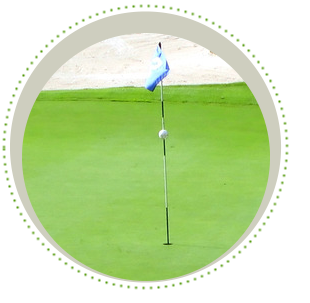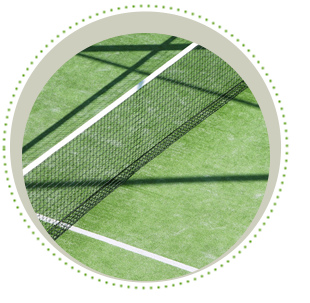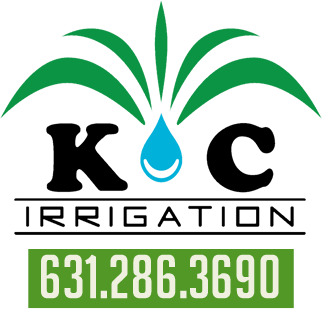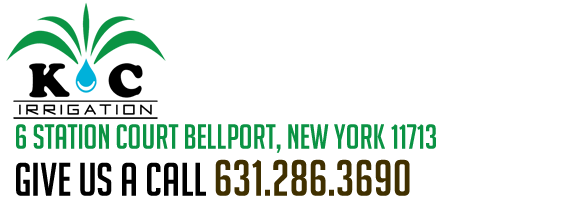
Irrigation design for golf greens can be easy or difficult. The degree of difficulty is determined by the shape of the green. When designing irrigation for the golf green the contractor should take into consideration the location around the green. Are there slopes, mounds or water around the green? Are there bunkers, if any, and what is their location? A common irrigation set up will consists of four rotors generally with 65 to 80-foot spacing, providing more than adequate coverage. However, many greens do not fit into the generalized spacing of a landscape. With all turf-irrigation systems, rotors should be ideally installed "head-to-head." The water being thrown from one sprinkler should just reach the sprinkler adjacent to it. A perfect example of this would be a sprinkler throwing water a radius of 60 feet should be no more than 60 feet from another sprinkler. It is not uncommon to see a 60-foot spacing with a sprinkler that throws 65 feet to make sure that the turf around the sprinkler is adequately watered while using gear-driven sprinklers. On a windy green, you should space sprinklers (with equivalent throw) even closer.

It is important that all rotors are installed on the outside of the green. No rotors should be in the area of the green or green collar. When installing irrigation around the green, sprinkler head spacing is the key element to not having dry spots in the middle. You must know (gpm) gallons per minute and (psi) pounds per square inch on a greater scale. This is not your normal residential sprinkler system. A greater demand of water is needed in a shorter amount of time. Being able to read the charts and calculate how much water you want at each rotor is crucial.
Most golf greens that are large in size depend on rotors that will disperse up to 20 gallons per minute at 65 to 80 psi. If you have a large golf green that you are looking to install and four rotors are needed around the outer edge, you could be looking at 70 to 80 gallons per minute. Irrigation wells are commonly installed for golf greens because they are able to deliver large volumes of water. The most common procedure of installing a golf green and what estate managers and golf green companies like to see, is an electric valve situated away from the green. This will activate the supply of water to the green when needed, allowing water to be dispersed when the irrigation controller activates the valve.
Variable speed pumps have become very popular, delivering water in the field for only what is needed. Golf greens can remain pressurized without the hassle of large tanks. It also enables the irrigation contractor to be able to install quick-coupling valves. Quick couplers enables you to attach a hose to the irrigation pipeline, allowing you to hand water if any emergencies were to happen.
Irrigation for Turf & Clay Tennis Courts
The most common way over the years for installing tennis court irrigation has been with a  conventional sprinkler system. Newer ways to install irrigation for tennis courts are in the near future. Soon you will see and read a lot about subsurface irrigation for tennis courts. Meaning that a tennis court will be watered from below the surface of the court rather than from above.
conventional sprinkler system. Newer ways to install irrigation for tennis courts are in the near future. Soon you will see and read a lot about subsurface irrigation for tennis courts. Meaning that a tennis court will be watered from below the surface of the court rather than from above.
The differences between a subsurface irrigated court and an above-ground irrigated court is the moisture in the surface is replenished as it evaporates. Subsurface systems can be irrigated continuously while in use allowing the surface moisture content to be maintained. Conventional style systems will saturate the playing surface making the court unplayable for a period of time, along with sometimes not covering the court in windy conditions.
Here at K&C irrigation LLC we are still installing a lot of the conventional style Irrigation for tennis courts. We use Rainbird style rotors to apply irrigation to the court. The subsurface irrigation is a great thought, it applies the water straight to the source. We are always here for any questions you may have on Tennis court Irrigation.

















